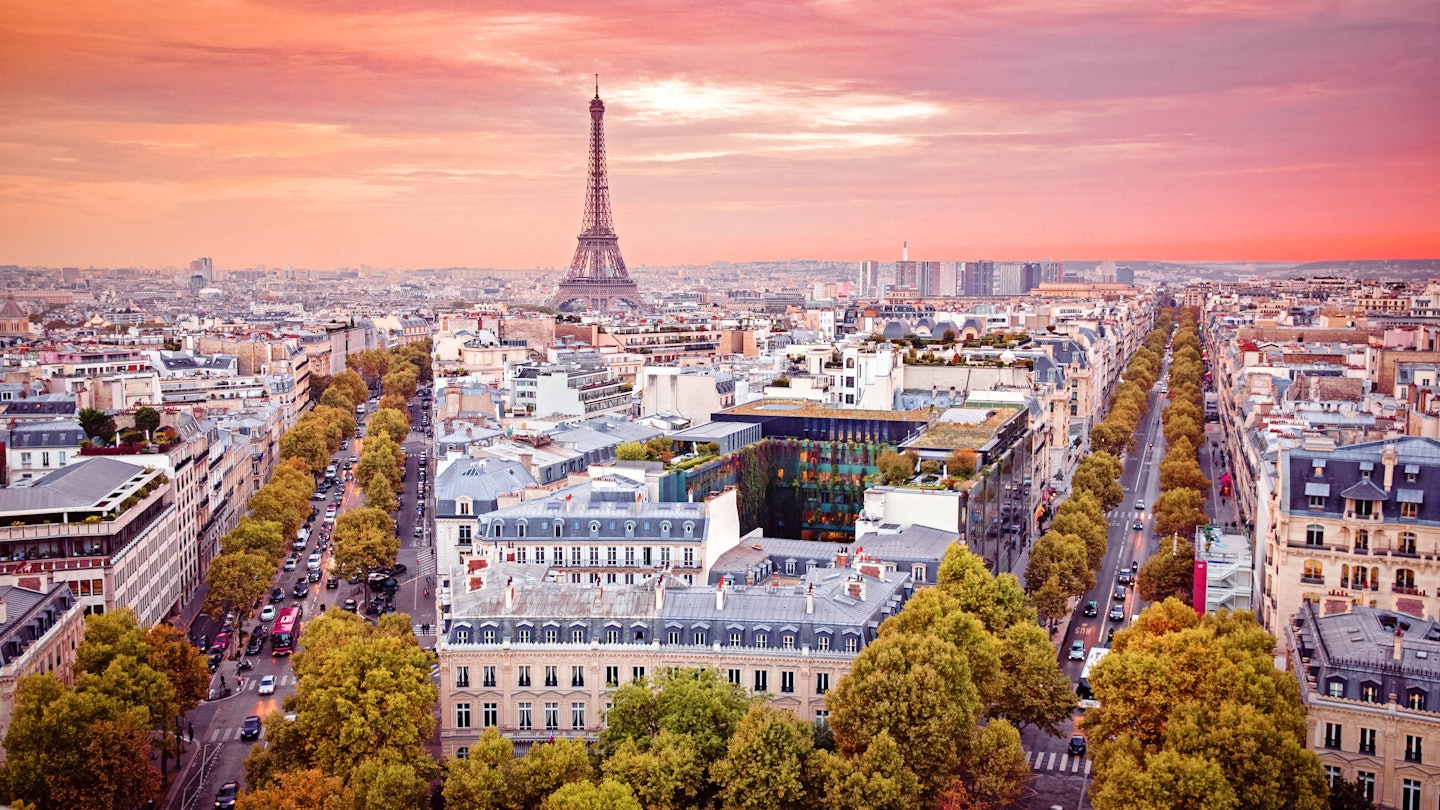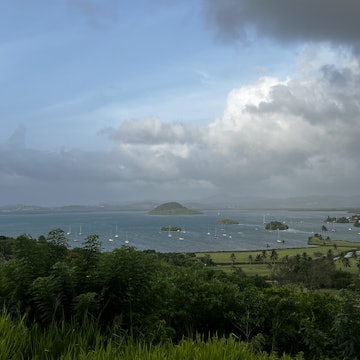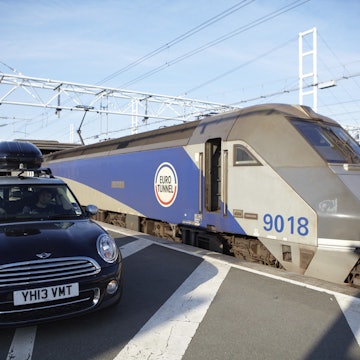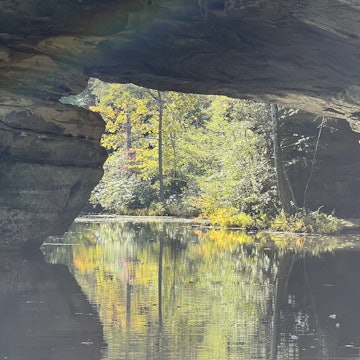
"I hope this is au revoir and not goodbye" - Our last trip to Paris before lockdown
May 9, 2020 • 5 min read

A writer recounts traveling to Paris with her son a few days before lockdown ©Feel good studio/Shutterstock
It was my fifth trip to Paris, and my son’s first. For that reason alone, I couldn’t bring myself to cancel the plans we’d been rehearsing for weeks – climbing the Eiffel Tower, daily breakfasts of pain au chocolat, a glimpse of the Mona Lisa. When 14 March arrived it brought with it a sense of impending gloom, as just days earlier coronavirus had been declared a worldwide pandemic.
If we’d have been flying, I would probably have backed out – but a two-hour trip on a well-ventilated Eurostar train seemed less risky. I had insurance, and there were no travel restrictions in the UK or France at the time, so I plowed ahead – armed with a Lonely Planet guidebook and plenty of hand-sanitizer.
Arrival to a changing Paris
My nine-year-old son, Freddie, has always been enchanted by the idea of traveling through a tunnel under the sea, but as soon as our train arrived it was clear that normal life in Paris was fading away. The Metro to our hotel was absolutely deserted, the few souls on board hidden behind facemasks. "How brilliant that no one uses the underground here!" my son said. "It’s way less busy than the Tube in London." I didn’t want to worry him by telling him that our journey was far from typical.

Waking the next morning, an online search revealed that most of the museums we’d planned to visit had closed, from the Louvre to the Musée d’Orsay. Instead, we boarded a bateau-mouche (riverboat) and gazed at the latter’s cinematic façade from the Seine. My mind’s eye supplied some of the painterly scenes I’d seen there on previous trips: Edgar Degas’ elegant ballerinas and Vincent Van Gogh’s sombre self-portrait.
Our bateau-mouche sailed past the Eiffel Tower, stripped of its usual queue of visitors. Next, we headed to the Musée d’Illusion, one of the few institutions small enough to open while complying with new government rules. Full of halls of mirrors and other optical tricks, it felt a fitting diversion – a place where nothing is as it seems, in a city turned on its head. My son and I both loved “the vortex”, a disorientating tunnel from which we emerged giddy with giggling.
Crêpes and the city's last steak-frites
Afterward, I bought us crêpes, which we ate from their lemon juice-soaked wrappers after the careful application of a disinfecting hand-gel. We wandered around the Forum des Halles, an architecturally-distinctive shopping mall with perhaps Paris’s premier tourist attraction (if you’re under 10): an enormous Lego store. It sells mini-figures clutching baguettes and small replicas of major city landmarks, and we stayed for what seemed like an eternity.

We found common ground later, in our choice of restaurant for dinner: the charming 10th arrondisement bistro Les Rupins, its windows glowing at dusk. A chalkboard menu offered steak-frites, which my son was delighted to discover were served in typically French fashion: without a vegetable in sight. It might have been one of the last steak-frites served in Paris, because hours later the French government closed all non-essential public spaces: from restaurants to cafes, cinemas to discos. And, of course, hotels.
Happily, the staff at our accommodation, Le Grand Quartier in Saint-Martin, were far too nice to turf their few remaining guests out on their ear. We breakfasted on Kouign Amman, a decadently buttery Breton pastry, and our waiter offered to make us sandwiches for a packed lunch. On its website the hotel describes itself an “urban haven”, but I can’t imagine they ever meant the words quite so literally. We holed up there all morning while I wondered whether to make a dash for the Eurostar terminal. The situation was changing so rapidly, I feared borders might be the next thing to close. Drinking tea and Googling anxiously while sitting in their courtyard garden, Freddie frolicked obliviously in the sunshine. We also paid a visit to Le Grand Quartier’s stylish concept store, where staff let my son play with the high-end toys on sale while I chose the souvenirs we’d now be unable to purchase elsewhere.
Soaring above the City of Lights
The last stop on our itinerary was a visit to FlyView, a virtual reality attraction. Falling firmly within the “non-essential” category, it was of course closed – but a friendly employee, Aude, called to ask whether we might like to come and try the experience anyway: a private tour. After a litany of cancelled appointments, it felt like a gift, and Freddie’s face lit up at the prospect. If he couldn’t see much of the real Paris, a virtual version would be a happy substitute.
After being fitted with headsets, we found ourselves soaring above the city, flying in jet packs over Montmartre’s hilltop cathedral, the Sacré-Cœur, and whizzing down the tree-lined Champs-Élysées. We hovered among the gargoyles of Notre Dame, and nearly crashed into the Arc de Triomphe. I could hear Freddie shrieking with joy as we approached our final stop, the Eiffel Tower. My son would get his wish to see from the top, after all.

After returning to earth and the increasingly-empty streets of Paris, we took a taxi to Gare du Nord for our Eurostar back to London. The driver says we’re the first fare he’s had all day. Gazing from the car window at the queues outside grocery stores, I wonder if more of our future travel experiences will be via technology rather than plane, train or automobile. Virtual sightseeing might become the new norm, allowing people to explore the world while minimizing their exposure to all the others who live in it.
But for all its merits, the virtual world is no substitute for the real one. For human beings, a replica is just that – we are drawn to what is original and authentic, in all its messy complexity. A machine can tell us what something looks like, but it can’t give us its smell, or taste, or simulate the feeling of it beneath our fingers. Beyond all else, it is people who make places special: from the heart-gladdening conversation with someone selling you a croissant to the patient waitress smiling at your faltering French. It’s these chance encounters that give our experiences away from home meaning – each one a window onto someone else’s world. Perhaps it’s greedy, but I’d like more of them – for me, and for my children. Paris, I hope this is au revoir and not goodbye.
Orla Thomas traveled to Paris with support from the Paris Convention and Visitors Bureau and stayed at Le Grand Quartier.















